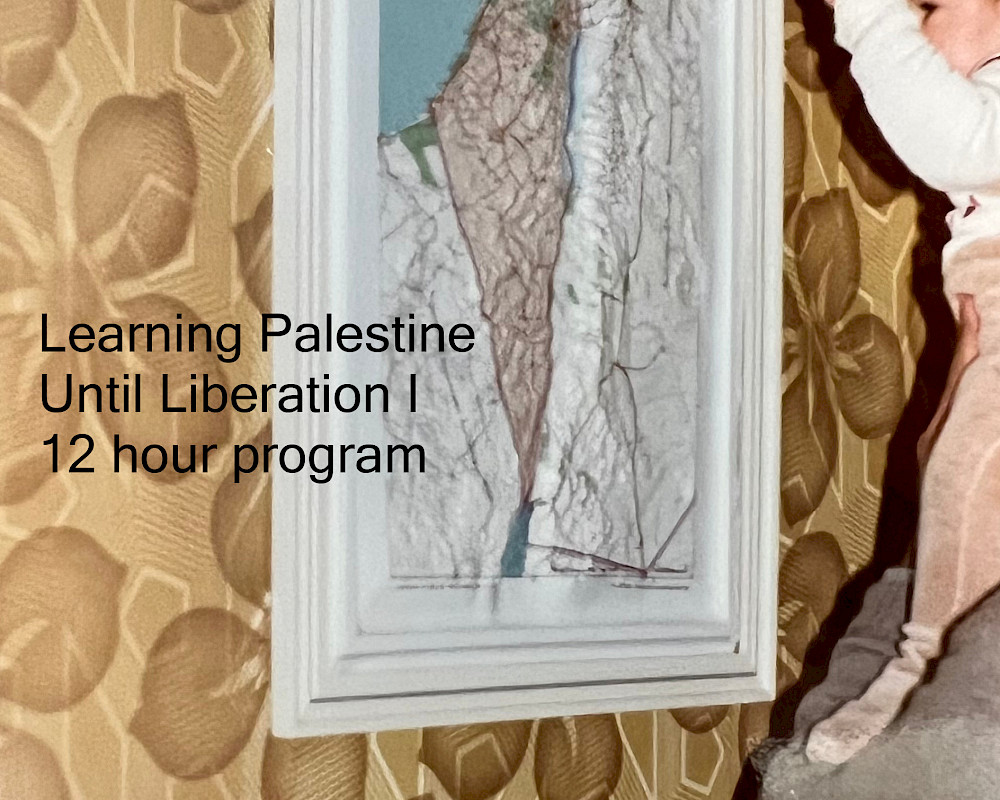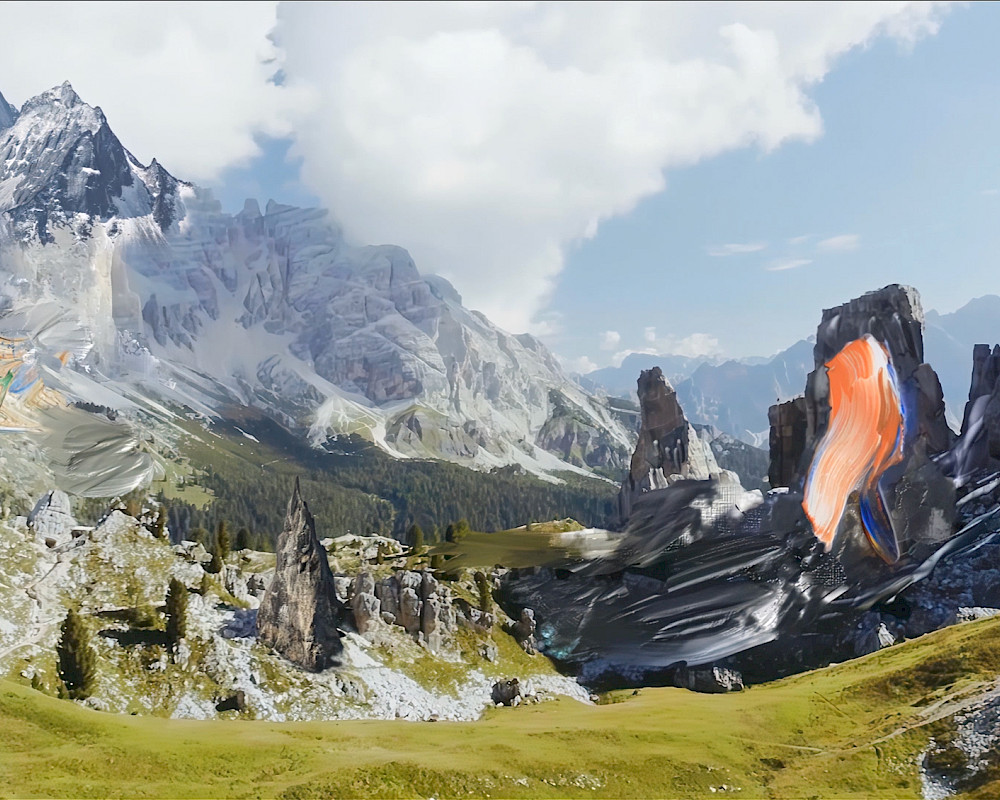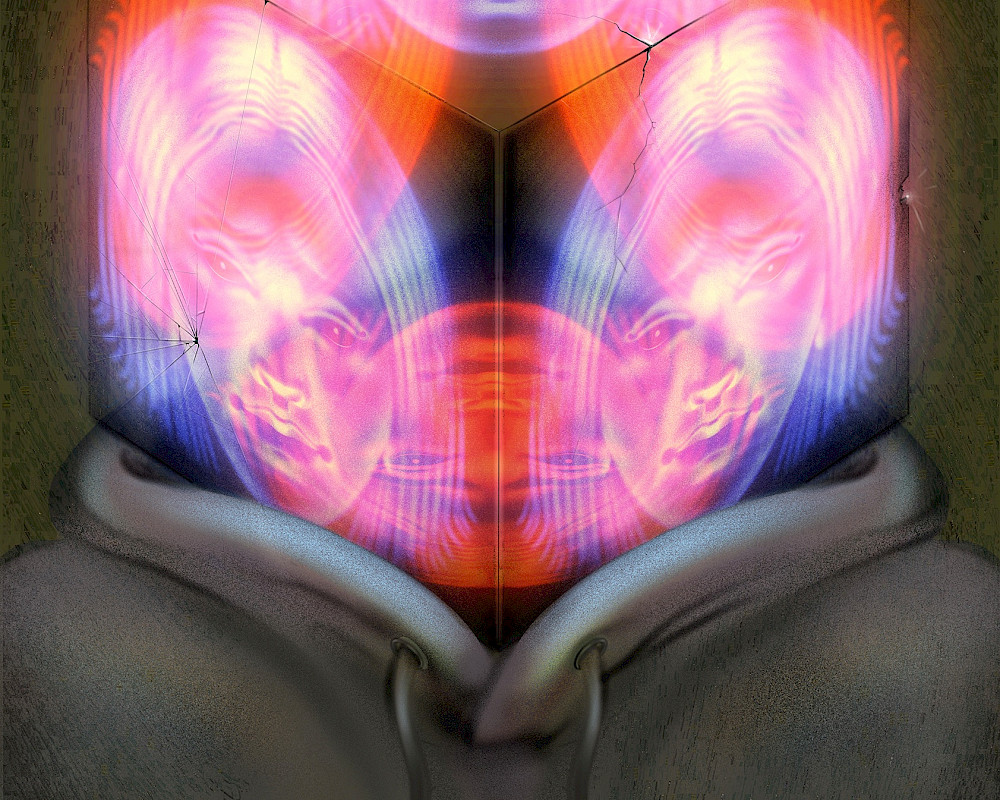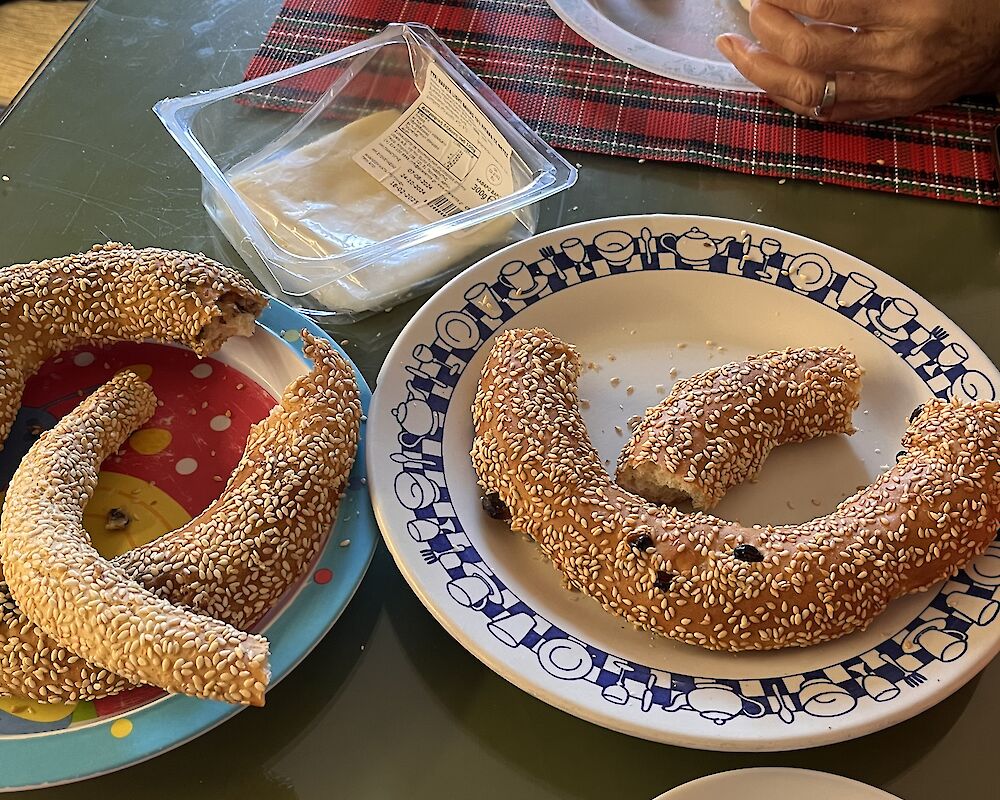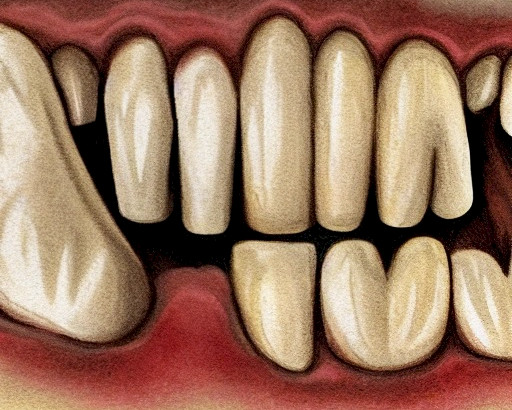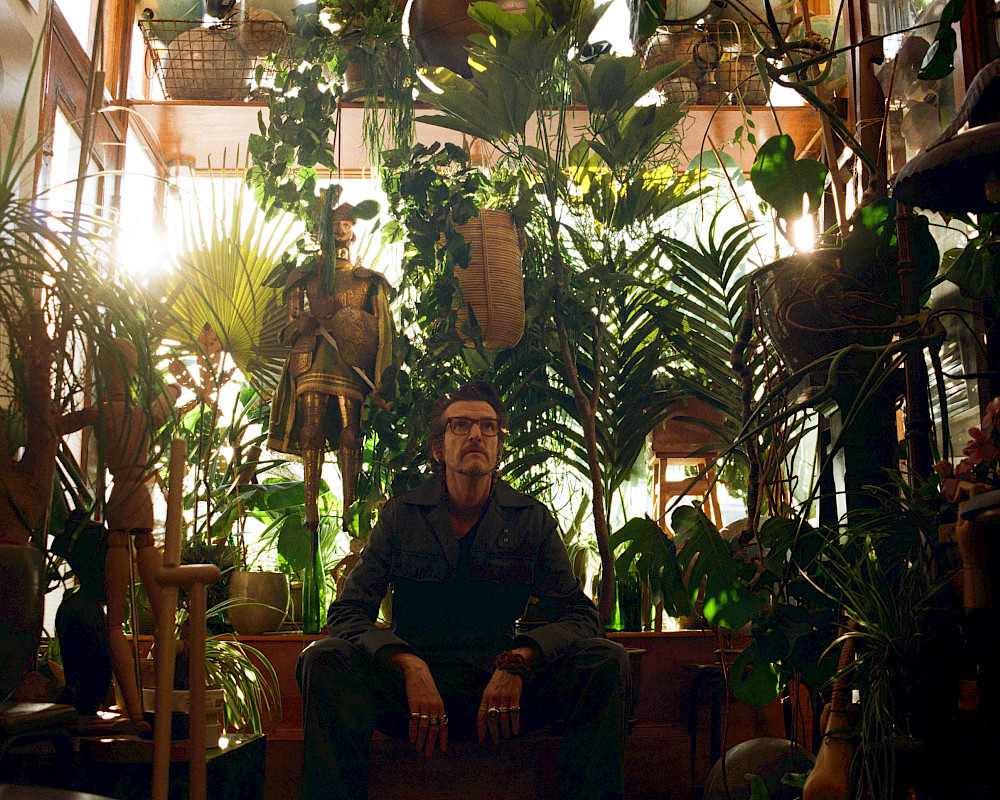video
Director's Commentary: Our songs were ready for all wars to come by Noor Abed
Noor Abed
Noor Abed (b. 1988, Palestine) works at the intersection of performance and film. Abed attended the Whitney Independent Study Program in Νew York in 2015-16, and the Home Workspace Program (HWP) at Ashkal Alwan, Beirut 2016-17. She received her BA from the International Academy of Arts in Palestine and a MFA from the California Institute of the Arts, Los Angeles. Abed’s work has been screened and exhibited internationally at Anthology Film Archives, New York, IDFA Pavilion Shorts, Amsterdam, Alchemy film & Arts Festival, UK, Gabes Cinema Fen Film Festival, Tunisia, Ji.hlava International Documentary Film Festival, Lagos Biennale, Ikon Gallery, Birmingham, Ujazdowski Centre for Contemporary Art, Warsaw, The Mosaic Rooms, London, Eye Film Museum, Amsterdam, and MAXXI – National Museum of 21st Century Art, Rome, among others. In 2020, she co-founded, with Lara Khaldi, the School of Intrusions, an independent educational collective in Ramallah, Palestine. Abed was a curatorial assistant in documenta fifteen, kassel 2021-22, and an artist in residence at the Rijksakademie in Amsterdam 2022-24. She was awarded the Han Nefkens Foundation/Fundació Antoni Tàpies Video Art Production Grant 2022.
9
min readOur songs were ready for all wars to come (2021)
super 8mm film, 20 min, with sound
Choreographed scenes based on documented folktales from Palestine, the film aims to create a new aesthetic form to re-awaken latent stories based around water wells and their connection to communal rituals around notions of disappearance, mourning, and death. The film explores the critical stance of ‘folklore’ as a source of knowledge, and its possible connection to alternative social and representational models in Palestine. How can ‘folklore’ become a common emancipatory tool for people to overturn dominant discourses, reclaim their history and land, and rewrite reality as they know it?
The only narration in the film is a song, which is sung by Palestinian singer Maya Khaldi. Its lyrics are a collage of different folk tales. Captured through mediums of film and sound, situated stories are archived and represented, creating a context that explores the capacity of social formation, and the possibility of recalling a memory that is capable of decentralizing images of fixity; a memory that is liberated from monuments.
For this Director's Commentary, Noor Abed has chosen to read from 'The Inner Monastery', the first chapter of Among the Almonds Trees: A Palestinian Memoir by the Palestinian poet, critic and philosopher Hussein Barghouthi (1954-2002). Barghouthi wrote this final book after a diagnosis with lymphoma led him to revisit his childhood memories - and to reflect on the looming presence of the Israeli occupation within them. He writes:“No one can return to his beginnings, even occasionally, unless he goes to his history, to himself in history.”
The passage from the memoir that Noor reads for her commentary is full of rich family lore:
"My mother was an orphan, and for a time had danced and sung at the festivals of the local felahin. She was adopted by an uncle called Qaddura, a giant of aman, quite robust. He lived with his brother, I believe, in this very monastery. They were armed robbers. Whenever a cow or a mare disappeared, everyone said it was at the monastery, where no one dared to go. One moonlit night, as he was riding his donkey back home, a 'rogue' snake struck Qaddura's right foot. He leapt off at once, and jumped about until the snake withdrew its fangs. By the time he arrived at the monastery, he was exhausted, and may have died right where I am standing at this moment. When I was a child, my mother swore she’d seen that ‘rogue' snake flying over the moonlit mountains, trilling with joy for having killed Qaddura. The ‘Qasaba Snake' had horns like an old bull, she told me, and its hiss made the dry shrubs shiver.
The notion of the ‘memory of place' came to mind as I stood there among the ruins. To the west, at the summit of a mountain covered with a forest of pine, cypress and oak, shine the bright halogen lights of the settlement that the Israelis call Halamish and we, the ‘Nabi Saleh Settlement’. Cold floodlights and barbed wire everywhere. The settlement seems to be afloat in space, perhaps because of the bright lights, as though it hasn't yet touched land or history. What does a settler from Russia or Estonia, who arrived perhaps no longer than a year ago, see when he opens his window and gazes at these mountains where I am now standing? What will he see and comprehend of these mountains, floating over the history out of which they have risen? He will certainly not see the snake that flies and trills, hear its cry, nor learn the secret that urges the one suffering from cancer to go wandering among the ruins at one o’clock in the morning. He will not touch history even if he were a soothsayer; not my history anyway, even if he were a god.
As I stood there among those ruins, I felt there was an enormous difference between the two kinds of light: moonlight, and the halogen light flooding out of the settlement. The latter is focused and oppressive, its glare extreme, reaching even beyond the barbed wire that isolates every such settlement from its environment. It is more like an 'armed vision’, an occupation by means of vision, and the visual architect of a state in the delirium of armed visions lit by halogens even in its sleep. The settlement as a whole seems like a book about the soul, or about the relationship between light and power. No one has yet studied the relation between light and power.
It seemed I was seeing two memories side by side: the memory of snakes that trill with joy as they fly, and a memory made of visions and armed myths that dream of eradicating the snakes. (Didn’t Yitzhak Shamir, previous Israeli prime minister, say "The Arabs are snakes?) Between two memories, the executioner’s and the victim’s, is a valley or an abyss, a chasm of some sort, and I am standing on its invisible edge. Could it be that the strange sound like the crying of a small child in this moonlit night was coming from the depths of that chasm?
When I returned home, I asked an uncle, who was older and had a greater store of memory, about the sound. "That’s the sound of a small animal called ghreriya. In the old days, they used to hunt it with dogs and shotguns. Its meat is delicious, but now it's extinct. You might have heard the last ghreriya in the mountains.' "They’re not extinct, I thought, "There were ghreriyas at the Ramallah hospital too. They were giving birth or being born on the upper floor. Or being preserved in the morgue refrigerator below. Indeed, I have seen them.'
I had formed a deep attachment to the Inner Monastery, as if captivated by the very act of standing in the path of what blew there from my ancestors' memories in order to construct my beginnings from their endings. For example, I would try to imagine my mother's uncle Qaddura playing his rabab as he stood on the roof, looking out onto the deep, moonlit valleys and terraced orchards that had been ploughed and planted. My mother swore that people heard him all the way over not only in the neighbouring villages but also in the distant ones. I imagined him hanging a shotgun on each of the Monastery's four walls, climbing the narrow stone steps, spreading his cloak on the ground and starting to play. I do not like the rabab, I prefer the nay. Then I try to imagine that highwayman playing the nay.
They say that reeds hold a divine secret that God (All praise to Him !) had planted in the breast of Prophet Muhammad. Unable to bear it, the Prophet revealed the secret to Ali Ibn Abi Taleb, and entreated him to not tell anyone. But Ali could not bear it either, so he went to a deep and distant valley and revealed it to the reeds. From that day on, the sound of every nay made out of reeds sets free a divine secret that cannot be spoken in words. The sadness of the nay, Mevlana Jaluluddin Rumi tells us, is the yearning of the reed for the plant from which it was cut, its origin, its first valley. For what origin did our Qaddura yearn, which beginnings?
***
From the roof of the Monastery where he played his instrument, Qaddura could almost see Deir Ghassaneh, the native village of the Barghouthi tribe, and his as well. His ancestors came from there—at least his the ones he knew of did.
Once, there was a feud among the elders of the tribe, and on a moonlit night like tonight, my great-grandfather stole into a house and killed twelve of his male relatives while they slept. Then he packed his horses and camels, his women and children, and ran away to this distant spot where, a century and a half later, I would be born from such a ‘beginning’.
Qaddura belonged to that fugitive lineage. He had four brothers, the same number as the shotguns that hung on his four walls. Kayid, the most powerful among them, lived with him at the Monastery.
One night, Kayid, riding his white stallion, chanced to pass the clan hall where the elders spent their evenings. As he rode past, he saw Qaddura emerge, fuming with anger because one of the elders had interrupted him when he was speaking. Kayid got off his horse, storde into the hall, and, grabbing the elder by his shirt, said, ‘Your horns have grown big since I’ve been away. I’ll have to break them for you'. He was Qaddura’s right arm. One time, he used ropes to climb up into a mansion of an important elder. He managed to unlock the doors and was about to lead away the horses and the cattle, but the guards woke up and caught him and held him prisoner. When news of this reached the Monastery, his sister said, ‘Don’t worry about him–worry about what’s going to happen to the mansion.’ Qaddura sent a letter, warning the elder to release Kayid in three days.
Three days later, Kayid was back home.
It was to be expected that Kayid’s funeral wouldn’t be special. The evening that news of his death reached our village, a group of men and women headed for the roofs and courtyards, each holding a stick wrapped with a cloth dipped in olive oil or tar. They lit up their torches and danced the night away in celebration of his passing.
As for Qaddura, he lived for a while until he died from the bite of the trilling snake. Three females under his protection were rendered homeless: his wife, my mother and his rabab.
His wife was addicted to snuff and acquired the nickname 'Snuffie’. She left the Monastery, which then fell into ruin, and moved to the village, to an old Crusader-style stone house. Its door was made of heavy wood, and the walls and the roof formed a single stone arch. When I was a child, the house seemed to me an endless tunnel. My mother sometimes sent me to sleep there, at Snuffie’s house. One night, I suddenly woke up. The lantern was still shining, its pale yellow light radiating through that bizarre house that felt like astringe and warm womb. Snuffie was panting. sniffing her snuff and muttering invocations and obscure spells." [1]
References
[1] Hussein Barghouthi, Among the Almond Trees: A Palestinian Memoir. Translated by Ibrahim Muhawi. Chicago: Seagull Books (2021). 37-41.
